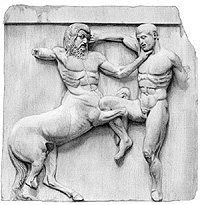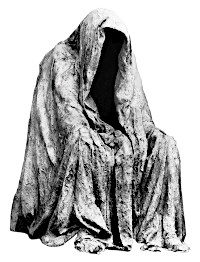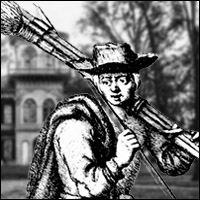Upon meeting James in 2022, or late 21, I think, he gifted me this university paper he wrote, in 18 point lucida unicode, so I could read it! I have finally taken the time to read his work. I have read Norse sources, but have not studied any of them. This reading has been a learning experience for me. Below I will note some of his major themes and offer some similar examples from other Arуan literature.
Gifting as the core to the privilege a tribal headman enjoys in leading his kinsmen, peers and loyalists is addressed early and continues as a theme. In civilization, the lower status people give to the higher status people. In tribal society, the flow of giving descends rather than ascends across warrior cultures.
Drinking as a social bonding action serves multiple purposes. Tacitus informs us that Germans never made a treaty unless over drink, and then ratified it soberly the next day. This practice survives among military men to this day, who do not trust the man who they have not seen drunk, when the affectations peel away. The place of the mead cup lady of the hall is predicted in Gilgamesh when the breweress bars the door of her tavern to the hero until he reveals himself of goodwill. This tradition was continued directly by the pyrates who revolted against Modernity in its early phase and wrote their constitutions and had trials over a bowl of punch.
Lineage, expressed before personal signification in Beowulf, is noted in the discussion of combining Viking funeral wakes and the feast of assumption of leadership by the dead chief’s successor, remains as important as it was to the heroes of Homer. From the earliest date it was important to declare one’s bloodline before a duel.
Bragging, so disgusting in modern, Christian-influenced society, is discussed as an actual necessity in a pre-literate age, so long as it is prefaced by a declaration of lineage, placing one’s father first. This is rock solid Arуan ethics and is most permanently reflected in the epigrams of Agon victors of ancient Greece.
Renown is actualized by the holding of a feast, the giving of gifts and the demonstration of a chief’s willingness to bring armed, drunken warriors together, even to conduct poetic insult contests. Not only is the chief showing his willingness to spread the wealth of success, he is conducting himself from the high seat of the hierarchy in a manner reflective of command over the chaos of battle, when cool heads direct hot actions at the best place, angle and time. In the Rage of Achilles, Agamemnon has violated this most ancient precept.
Death of a chief and internment in a barrow reflects a reciprocal trust that extends beyond life, that the chief who recognized and rewarded the acts and honor of his men, would be so recognized in death. These barrows are of the greatest antiquity, described in the first poem of heroic tradition from ancient Greece, Hesiod’s The Shield of Herakles. I contend that this work was more ancient than Homer’s work, though academia disagrees.
From the internment of the kings of Scythia to the funeral ships of the Vikings, we have physical evidence of this bond, as well as Hesiod’s notation that a river god might obliterate such a barrow, if a chieftain violated the precepts of piety.
Below are some select quotes:
“… the chieftain’s longhouse, itself the sun around which all the activities of the feast orbit. The food for the feast is hunted, fished, or grown within its domain, much of the alcohol is brewed nearby if not stored inside, many of the utensils and serving dishes were no doubt manufactured by craftsmen from the surrounding villages, in short, the longhouse was the center of the local world to which everything and everyone contributed.”
“The extent of Viking trade can be demonstrated by the fact that Sweden is a better source for obtaining silver (but not gold) Samanid coins than Afghanistan, where the coins originated.”
“...braggot (unhopped beer sometimes mixed with mead or other herbs for flavor) or ale, along with mead, often mixed together in a sort of beer-fruit wine and honey cocktail.”
“…the practice of flyting, i.e., ritualized exchanges of insults in verse, is well documented.1 A wide variety of games are known to have occurred, including board games2. Wrestling and tests of strength among men were equally popular, and meeting solely for the purpose of engaging in games was not unheard of.”
Odysseus among the Phaceans, and as the beggar in his own hall, both demonstrate the great antiquity of hall feasting as a social sorting mechanism.
“The organization of seating in the Viking Age hall was based on one´s position in the dominance hierarchy, where a seat closer to the chieftain was more respectable.”
Odysseus at the Door with the errand runner, who he must box to establish his place at the foot of his supposed masters, is a prelude to his slaughter of the men who had violated the sanctity of his hall when he was at war, as well as the favor of his queen, Penelope, who offers the most extensive portrait of the chief’s wife’s place as a logistical and confirming force in the ritual of the men’s hall, where women were active.
“The mediation of this tension is the purpose of the lady of the hall, who partly through her reassurances to less successful warriors prevents violence within her husband´s retinue.”
“…people of the pre-Christian era of the Viking Age viewed feasts as sacred rites, not mere earthly political undertakings.”
The Three Feasts
“…towards winter for a good season, one in the middle of winter for the crops, and a third in summer; that was the sacrifice for victory.”
There is an ancient legend that Simonides, the famous epigramist of Ceos, who immortalized the Spartans who fell at Thermopyle, was a guest at a chieftain’s hall in Thessaly. The chief held him captive under threat and his hall was leveled by an earthquake. The poet survived, some claiming that two angels, Polydeukes and Castor rescued him. Note that while Germanic and Viking feasts involved armed men, that Greek hospitality had evolved to the giving over of one’s weapon at the door, and that citizens of classical antiquity were generally unarmed in their own community.
“…drinking rituals are the focus of the literature. This may be because they were the most significant and unique events and those which were associated with bonds…”
“What is unique about the feast is not the feast itself, but the variations of it. From the feast, a variety of other events were associated. The feast was the cultural highlight of the Viking Age…”
James closes with a section from Beowulf which shows the feast in the great hall at its most cohesive, revealing the discord that the depredations of Grendel had caused in antithesis.
Timocreon, a boxer and butcher, was accused of hall treachery by none other than Simonides! Milo and other Olympic Victors engaged in feasting after the agons they contended in, always as a scared rite, and sometimes as a contest. The agons of Hellas, with the focus on sacrifice and truce, along with the prohibition of weaponry, seem to represent, not in infection of civilized enslavement of the warrior, but a method for scaling up friendly competition among many cities, consisting each of 2 to 12 tribes, by way of truce. It is no accident that the Macedonion hero king, Alexander, who exemplified the war chief like no other, attended the Olympic sanctuary at Elis.
Alexander & Attila
While Alexander attempted to expand the feast, gifting away everything and refusing to entertain betrayal at feast to the point of falling victim to poison, Attila simply scaled up the hierarchy and multiplied the frequency of feasting to the point where that indulgence seems to have killed him. This would be the fate of many Mongol kings. Tamerlane used the feast, without participating, as a management device, keeping all his plans to himself. In the light of these examples, I suggest the Viking Feast as very conservative, reserved for three seasonal events and for victories, mindful of resource limitations. The acceleration of alliance, acquisition, submission and distribution of power that propelled steppes conquerors seems to have exceeded the feast’s capacity as a social concord event.
Homer & Hesiod no doubt served in such halls as poets, as did Teraldus the Norman composer of The Song of Roland and the unknown and probably ancient composer of Beowulf. The poet seems to emerge as a third party replacement for the direct bragging and insulting of the more primal hall, exemplified in The Iliad, the Odyssey and Beowulf. It is likely, that Hesiod was murdered while following this capacity, eschewing the subtextual objections of corrupt rule favored by Homer for a blunt indictment of lords as “bribe-eaters.”
Christendom replaced the hall with the church, where God ruled, and removed the chief to his mostly empty hall, divorcing the people from the ruler and adding dozens of feast days for the people, who congregated with their lord on Sunday, in God’s Great Hall. This facilitated larger scale war-making and social control and was eagerly accepted by both classes. In The Song of Roland feasting is gone and is replaced by the Council of Peers.
The Drawing Room and the Fancy descend from the feast of the great hall and formed a refuge in modern times from the counting house and courtroom. The Fancy culture, which brought the disenfranchised urban nobility and rural working class together under the ceilings of inns and taverns and even in the drawing rooms of great men, emerged to support the heretical activities of gambling, prize-fighting and dueling across the Anglo World in a multi-class manner that exceeded the aristocratic reaction to the loss of the ancient hierarchical hall across the rest of the Arуan world. I suggest that this was due to the more complete victory of merchant ideology that emerged doppelganger-like thru Christianity in England. The church never prosecuted boxing and other masculine rites so much as the middle class and their police.
Thank you, James Anderson, who my webmaster calls “James the Innocent,” as a mirror upon some tarnished namesake.

James Andersen, author
www.jamesRandersen.com
www.jamesRandersen.com











